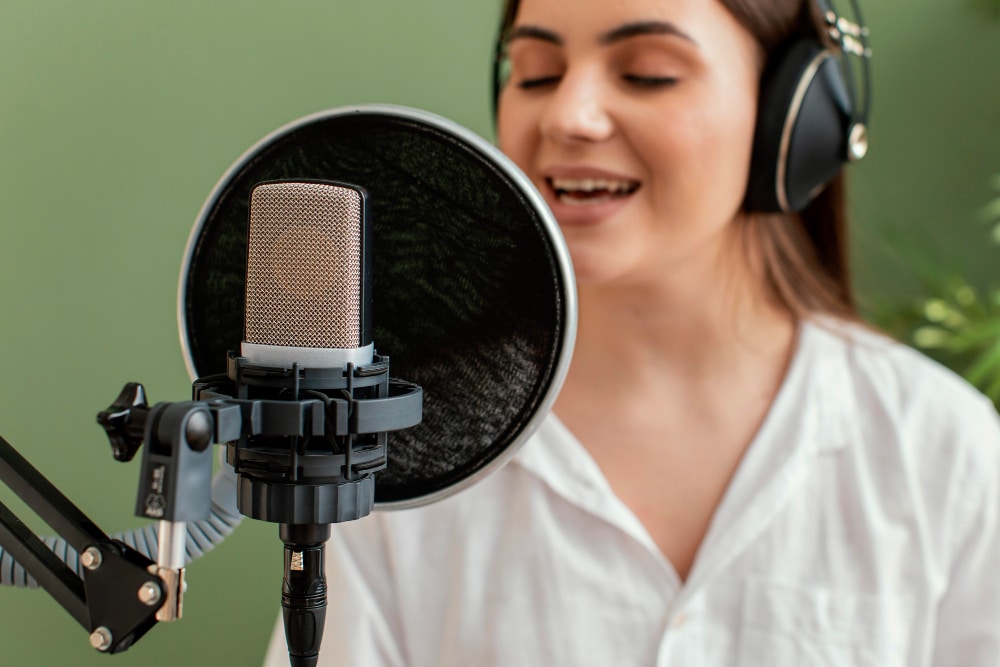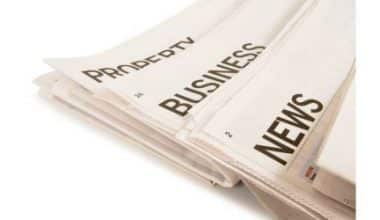Have you ever been driving down the road, casually listening to the radio, when an ad comes on that instantly grabs your attention? Maybe it was a catchy jingle or a story that hit close to home, but whatever it was, you found yourself listening until the very end. As someone who has worked in advertising for years, I’ve noticed that the ads that truly captivate aren’t the ones with the biggest budgets, but the ones that connect with their audience on a deeper level. Radio ads aren’t an exception.
Creating an engaging radio ad is an art. You don’t need visuals; you have to rely entirely on sound, voice, and emotion to convey your message. In this article, I’ll walk you through everything you need to know about crafting radio ads that not only capture attention but also inspire action. Whether you’re new to radio advertising or looking to fine-tune your approach, you’ll find practical advice, proven examples, and a step-by-step guide to writing your own radio ad script.
What Are Radio Ads?
Radio ads are short, persuasive audio messages aired on radio stations, designed to promote products, services, or causes. Despite the rise of digital platforms, radio remains a powerful medium, especially for reaching audiences who are on the move. A well-crafted radio ad can increase brand awareness, drive sales, and build lasting customer loyalty. It’s cost-effective and has the unique advantage of delivering your message without visual distractions, allowing the listener to focus entirely on your words and sounds.
Basically, here’s how radio advertising works:
- You identify radio stations to advertise on and contact them for airtime
- The radio station shares the available ad formats and time slots
- You book your radio spots, sign a contract, and submit your ad
- The radio station broadcasts your commercial to its listeners
Depending on your marketing strategy, radio ads can help you draw the most value from your initial investment with fewer overheads than social media or TV ads.
Read Also: Media Coverage: Your Blueprint to Captivating Audiences and Making Headlines
While the main intent is to promote your brand and convert listeners to customers, radio ads can take different forms:
Types of radio ads
Like online ads, whose formats include PPC, mobile, video, display, influencer, and social media ads, there’s an array of radio advertising styles to choose from that will suit your business and target market. Here are some of the most common:
#1. Live reads

This type of ad is also known as an endorsement ad. It is a simple format where the radio show host reads an ad live on air. Live reads can give your message the spotlight it needs, making your brand stand out. Plus, you don’t incur additional production fees.
#2. Pre-recorded commercials
Many radio ads are pre-recorded. This means that they’re created and provided by the advertiser and typically feature a voiceover artist. Usually, the advertiser provides the script, while the presenter reads it before recording it. The station then airs the advertisement during commercial breaks.
Pre-recorded radio commercials are polished and professional, featuring well produced scripts, music, sound effects, and a call to action (CTA). The format provides advertisers with more control over their messaging, as well as more ad reach and performance transparency. However, they are more disruptive and do not provide a native listening experience.
#3. Sponsored shows or segments
Sponsored ads are a go-to if you’re looking for a subtle approach. They work like conventional sponsorships, except someone sponsors a particular segment of the broadcast, like rush-hour traffic, news updates, weather, sports, travel, or giveaways.
You can also sponsor an entire radio show. For example, you can approach a local radio station and purchase a sponsored ad spot for its “Big Money” show, running from 3 PM to 6 PM. The host can read your ad every hour, ensuring your message stands out and reaches your target audience. With sponsored ads, you can reach more listeners, engage your audience, and drive awareness more effectively.
#4. Musical jingles or songs

Jingles are a memorable form of radio ad that leave a lasting impact in listeners’ minds. The strong connection between music and memory in jingles or songs makes most people gravitate toward this type of radio ad, helping you:
- Promote your products or services
- Increase brand recall
- Keep your brand at the top of listeners’ minds
#5. Voiceover ads

Voiceover ads are a popular radio advertising format that involves using voice actors to create an audio picture of your product or service for your audience.
To make a voiceover ad, simply:
- Create the ad script
- Identify a voiceover artist for your audio ad
- Present the ad script to the voiceover artist for review
- The voiceover artist will read your script and send a link to their recording
- You send the ad to the radio station to include in your desired ad slot
The performance of voiceover ads solely depends on the voiceover artist’s voice. Make sure the voiceover matches your brand identity. If casting by yourself sounds difficult, you can hire a Sonic branding or advertising agency to cast voice talent for your brand.
Why Radio Ads Are Effective
Radio ads work for a variety of reasons, but let me break it down to a few key factors:
#1. Reach and Accessibility
Radio has the ability to reach a broad audience, including those in areas with limited access to the internet. It’s also incredibly mobile, reaching people in their cars, at work, and in their homes.
#2. Cost-Effectiveness
Compared to TV or digital ads, radio ads are relatively inexpensive. You can create a high-quality ad without breaking the bank, especially if you’re working with local radio stations.
#3. Emotional Appeal
The magic of radio lies in its ability to create an emotional connection through sound. The right voice, music, or sound effects can evoke feelings in a way that resonates with your audience on a personal level.
#4. Frequency and Repetition
Radio ads often benefit from being aired multiple times a day, ensuring that your message is heard again and again. This repetition is key to brand recall and action.
How Much Do Radio Ads Cost?
The cost of a radio ad can vary significantly depending on several factors. For a local radio ad, you might pay anywhere from $6 to $30.5 for airtime, depending on the station and the time slot. National radio ads on major stations will cost much more, anywhere from $70 to $305, especially during peak hours like morning or evening commutes.
Beyond airtime, you’ll also need to factor in production costs. A professionally produced 30-second radio ad might cost between $30 and $185, depending on whether you hire voiceover artists, use sound effects, or work with an advertising agency. While these costs may seem steep, radio ads remain one of the most cost-effective ways to advertise, particularly when compared to TV and online video ads.
What Makes Up an Engaging Radio Ad?
From my experience, the most successful radio ads have a few key elements in common:
- Clear and Compelling Message: Don’t try to say too much. Focus on one main idea and drive it home.
- Attention-Grabbing Hook: The first few seconds are very important. Whether it’s a question, a surprising fact, or an intriguing sound, your ad needs to hook the listener from the start.
- Emotional Appeal: Use stories, humor, or relatable scenarios to create a connection with your audience. When people feel something, they’re more likely to take action.
- Call to Action (CTA): A clear, strong CTA is essential. Whether it’s asking listeners to visit a website, call a phone number, or visit a store, the action should be easy to follow.
- Sonic Branding: Memorable sound effects, jingles, or a recognizable voice can make your ad stand out and reinforce your brand.
How to Write a Radio Ad Script

Writing a radio ad script can seem challenging at first, but it’s easier when you follow a structured approach. Here’s how I approach it:
#1. Know Your Audience
Before you write a word, think about who you’re speaking to. Are they young professionals, parents, students? Knowing your audience will shape the tone and content of your ad.
#2. Start with a Hook
The first line should grab attention. For example, “What if you could save $100 this week, without lifting a finger?” hooks the listener with a question that sparks curiosity.
#3. Focus on One Key Message
Avoid trying to cover too much. If your ad is about a discount on kitchen appliances, stick to that. Simplicity is more effective.
#4. Use Conversational Language
Radio ads should sound like a conversation, not a sales pitch. Write in a way that feels personal and relatable.
#5. End with a Strong CTA
Very important. Make sure listeners know exactly what to do next. “Visit us online at [website]” or “Call [phone number] now for more details.”
Here’s a detailed checklist for your reference:
Best Practices for Creating Radio Ads
A few best practices can make a big difference in how your ad is received:
#1. Length and Timing
Stick to standard ad lengths – 15, 30, or 60 seconds. Any longer, and you risk losing your audience’s attention.
#2. Sound Design and Production
Invest in high-quality production. Poor sound quality can make even the best script fall flat.
#3. Voiceover Talent
The voice you choose is crucial. Make sure it matches your brand’s tone – whether that’s energetic, soothing, or authoritative.
#4. Repetition and Frequency
Radio ads work best when heard multiple times. Plan to air your ad frequently over a set period to maximize its impact.
Examples of Engaging Radio Ads
To show you how this works in practice, here are five standout examples of radio ads that captured attention:
#1. Coca-Cola
Known for its jingles and nostalgic storytelling, Coca-Cola ads use sound to evoke emotion. One memorable ad featured the sound of a bottle opening, followed by the unmistakable fizz of a freshly poured drink.
#2. Dangote Cement
Dangote’s radio ads often focus on reliability and trust. One ad featured testimonials from satisfied customers, lending credibility and authenticity to the brand.
#3. Nike
Nike’s “Just Do It” radio campaigns use inspirational stories that encourage listeners to push their limits, backed by simple but powerful sound effects.
#4. Guinness
Guinness is known for its distinctive voiceovers and simple, powerful messages. One ad used a deep, authoritative voice to ask, “Made of More?” encouraging listeners to associate the brand with strength and resilience.
#5. Airtel Nigeria
Airtel’s radio ads often use local languages and scenarios that resonate with the Nigerian audience, reinforcing the brand’s connection to the everyday lives of its users.
Advantages of Radio Ads
Radio ads offer several benefits that make them a great choice for advertisers:
#1. High Reach and Targeting Capabilities
You can target specific audiences based on the stations they listen to, ensuring your message reaches the right ears.
#2. Cost-Effective for Small Businesses
Radio advertising offers affordable options, making it ideal for small businesses looking to make an impact without spending a fortune.
#3. Quick Turnaround
Unlike TV ads, radio ads can be produced and aired quickly, allowing for more flexibility with your campaigns.
#4. Mobile-friendliness
Radio can reach people anywhere, whether they’re at home, at work, or in their cars, making it a highly versatile medium.
How Effective Are Radio Ads?
Radio ads are highly effective for targeting specific local audiences, offering cost-efficient reach and repetition. They create a personal, intimate connection through audio, enhancing brand recall. However, they lack visuals, making them less effective for complex messages or broad, global campaigns.
In Conclusion
Crafting an engaging radio ad isn’t just about being creative – it’s about understanding your audience, crafting a message that resonates, and delivering it in a way that sticks. With a clear message, strong emotional appeal, and a memorable call to action, your radio ads can capture attention and drive results. Whether you’re a small business owner or a seasoned marketer, the tips and examples I’ve shared will help you create radio ads that leave a lasting impression.
Remember, the most effective radio ads are the ones that feel personal and relatable. So, go ahead and start crafting your own radio masterpiece – your audience is listening.
Related Articles
- Top Skills Every Advertising Manager Needs to Succeed
- Testimonial Advertising Done Right: How Brands Leverage Customer Success Stories
- Transfer Advertising Explained: Boosting Brand Perception Through Strategic Partnerships






